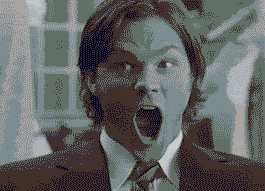I have a secret to tell.
Ok, really it’s not a secret at all. But so few people know about it that it might as well be. Here it is. Ready?
Not all “acupuncturists” are acupuncturists.
Surprised?

Sounds strange, I know. Unfortunately, acupuncture has been mystified, by some. By others, it’s been made out to be New Age hokum voodoo practiced by dope smoking, hippy quacks. Needless to say that right now, the majority of people in the US know little to nothing about acupuncture. And of those that do, I’m afraid many of them have been duped.
I’m sharing this information because I want people to receive the best care possible when they make a decision to try a needle therapy. I want people to be informed so that they are able to make a decision that is right for them. By learning more about what acupuncture is, (and what it isn’t) more people can get the right kind of treatment for their specific situation.
So, first off, let’s look at the word. “Acu” come from Latin. It means “with a needle.” “Puncture,” also having its roots in Latin, means, “pricked.” In Greek, the word becomes “stylostixis” – pricked by needle.
There are plenty folks out there that prick patients with needles. We’ve got Licensed Acupuncturists, Medical Doctors, Chiropractors, and Physical Therapists. All of these practitioners can “acu”-“puncture.”
However, when we look up the definition of “acupuncture,” it is most often defined as a form a therapeutic treatment originating from China using needles to prick specific points. Simply put, acupuncture is an expression of Traditional Chinese Medicine. On the other hand, “stylostixis,” is defined as insertion of needles into specific points to treat pain or disease. Even though it is synonymous with acupuncture, there is no mention of China or Traditional Chinese Medicine.
Why should that matter? It matters because Traditional Chinese Medicine is a fully integrated, holistic system of medicine. There is much more to it than just poking a needle into a body. Licensed Acupuncturists must undergo a 2600-3000 hour Masters Degree program to thoroughly receive training. Conversely, stylostixis is simply a singular modality. It is not a whole medicine. Most “medical acupuncturists,” such as MD’s or Chiropractors, will undergo a minimal150-300 hours of training.
Does this mean Licensed Acupuncturists, Medical Doctors, Chiropractors, and Physical Therapists all practice Traditional Chinese Medicine? No. Some do and some do not. Some practice acupuncture that is based in Traditional Chinese Medicine. Others practice stylostixis – a singular modality that a health practitioner can include to expand their repertoire of billable treatments.
Licensed Acupuncturists provide acupuncture under the guiding principles of Traditional Chinese Medicine theory. They work from a holistic viewpoint, treating both the root cause and the branch symptoms. TCM theory is a larger, comprehensive framework from which a Licensed Acupuncturist can address what is going on in the body. It is a practice with a rich history of thousands of years of independent observations that have been tested time and again.
Medical Doctors, Chiropractors, and Physical Therapists generally practice some form of stylostixis. Very few have a full training in Traditional Chinese Medicine. Not completely understanding the theories behind it, they instead work from “cookbook” knowledge of acupuncture points. Without the deeper understanding of TCM theory, it is much more difficult to craft effective treatments.
Other health practitioners may not recognize Traditional Chinese Medicine theory at all, performing what they call “dry needling.” This kind of treatment is focused primarily on the symptoms without regard to a root cause. In any case, for these practitioners the simple insertion of needles is used as another modality for which they can bill insurance and make more money.
Very few people realize that Licensed Acupuncturists are needle insertion experts. This is because Traditional Chinese Medicine teaches many different techniques of therapeutic needle manipulation. Licensed Acupuncturists are trained to use the techniques appropriate to the patient’s specific presentation. Thus a desired effect can be achieved with little to no discomfort for the patient. Unfortunately, the same cannot be said for a stylostixis treatment. It’s a “one size fit’s all” treatment that is often quite painful for the patient, as many who have undergone dry needling can attest.
Also from the Traditional Chinese Medicine standpoint, there is more to acupuncture than just needle insertion. There are considerations to be made regarding the whole of the patient – mental, physical, and emotional. The deeper implications of each specific point provide the patient therapeutic benefits on multiple levels of their being, not just musculoskeletal. But none of this knowledge is considered, nor applied, through stylostixis.
So when you hear someone say, “yes, I do acupuncture,” please ask further questions to determine whether they truly do acupuncture or if they simply practice a form of stylostixis.
It’s not a secret. But now you know.
Not all “acupuncturists” are acupuncturists.